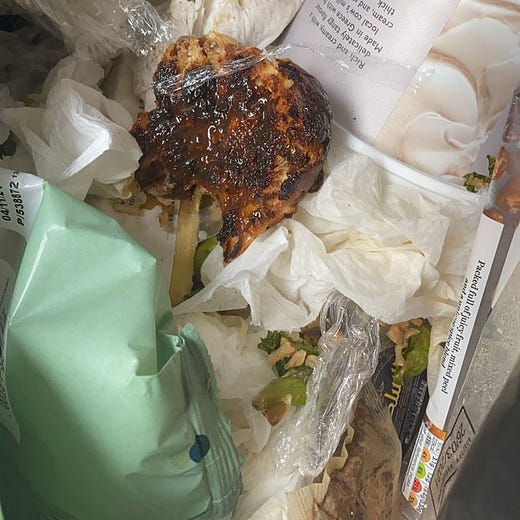A Template For Your First 30 Days on a New Team
The "State of the Union" is my go-to template to onboard successfully as a new product manager on a team
I joined a new team three weeks ago. As I ramp up, I keep notes — documents, conversation notes, and thoughts that I’m having (ex. “Why are we building feature X?”).
These notes are obviously helpful to me. But, deployed properly, they can also be useful to your team too.
This concept dawned on me while reading an article by Deb Liu (former VP of Product at Facebook, current CEO of Ancestry). When she started her new role, she insisted on beginning with a “listening tour.” Here’s why:
Leaders are not hired to have all of the answers, rather they are sought out because they can facilitate the company finding the answers together. At the end of the thirty days, I plan to share a state of the union assessment with insights from these conversations and how it will guide us going forward.
A “state of the union” creates a shared ground truth that the team can use to find a path forward. It also helps you clarify your understanding of the space and spark healthy conversation about the team's state.
I wrote an early state of the union after my first week. Here’s a look at the outcome (anonymized, with an index on the side):
Below, I’ll share how I created this in my first week and some of the value it provides my team (and me).
🧠 Accumulate Context
I find one-on-one meetings to be the most important source of context. The perspectives of key members of the organization can give you a more nuanced understanding of the space.
I follow a playbook by “Boz”, the VP of Facebook Reality Labs, for initial one-on-ones. He has an approach he calls the “Cold Start Algorithm.” This helps to make sure these one-on-ones give you the most context possible. Here's how it works:
For the first 25 minutes: ask them to tell you everything they think you should know. Take copious notes. Only stop them to ask about things you don’t understand. Always stop them to ask about things you don’t understand.
For the next 3 minutes: ask about the biggest challenges the team has right now.
In the final 2 minutes: ask who else you should talk to. Write down every name they give you.
Repeat the above process for every name you’re given. Don’t stop until there are no new names.
The first 25 minutes give you opinionated context. This is valuable when you’re learning about a space. Differences in opinions also create opportunities for you to drive clarity and better communication.
The next 3 minutes give you a list of problems you may need to tackle. But don’t be afraid to let some fires burn.
The last part is the most important. This will help you understand the “central nodes” on your team. These are the people with influence, knowledge and respect of the team.
Use the Cold-Start Algorithm to create a first impression of the team that is fresh and nuanced.
🖼 Paint the Picture
Now that you’ve collected these perspectives, unify them into an early point of view (POV).
Sharing this perspective has three benefits:
Refine and clarify your understanding: use your manager and other team leads as a soundboard for your POV. Take their feedback and make sure you’re on the same page.
Create shared truth for the next step: By driving clarity on the current situation, you’re setting the foundation for future strategy. If the team has the same understanding, discussions about the future will be more fruitful.
Build credibility with your team: Show that you’re actively thinking about strategy and context early on.
Here’s an anonymized version of my State of the Union. Use this as a starting point for creating shared understanding on your team.
Some notes:
Align your understanding with your manager first. The last thing you want to do is give mixed signals to the team.
Be humble and incorporate feedback into your POV. The goal isn’t for everyone to love your POV and take it as the truth. Its to create a shared truth with your team. Your SOTU is meant to be a conversation starter.
Summary
Create shared truth across your team. This helps to ground the work being done in the larger company strategy and facilitates conversations.
Use the Cold-Start Algorithm to make the most of your first one-on-ones. Repeat the process until you have enough understanding for a POV
Refine and edit notes into a cohesive narrative. This helps you and your team.
Align with your manager on your POV. This can help build context and trust with your manager.
Share with your team. This starts conversations and helps build shared understanding.
Internet Things I’m Enjoying:
✍️ Copywriting: The Definitive Guide: A comprehensive series on punchy writing.
☕️ Building a New Product on Founder’s Journal: How the founder of Morning Brew created a new product with few resources.
🎧 S8E1 - Kanye West YEEZUS on Dissect: One of my favourite podcasts is starting a new season analyzing the polarizing YEEZUS by Kanye. I’m so excited.
Tweet of the week
If you’re new to Product Life, subscribe below for concise, actionable and often surprising lessons for product managers.
Until next time,









Lol Will, that's WAY too much Marmite! You have to use a little bit and mix it with butter to taste :)
Appreciate this guide! I have always loved having one on ones, it's an awesome way to get people to share more insights and also to build good rapport. Thanks for suggesting asking for more people to talk to, something I haven't done